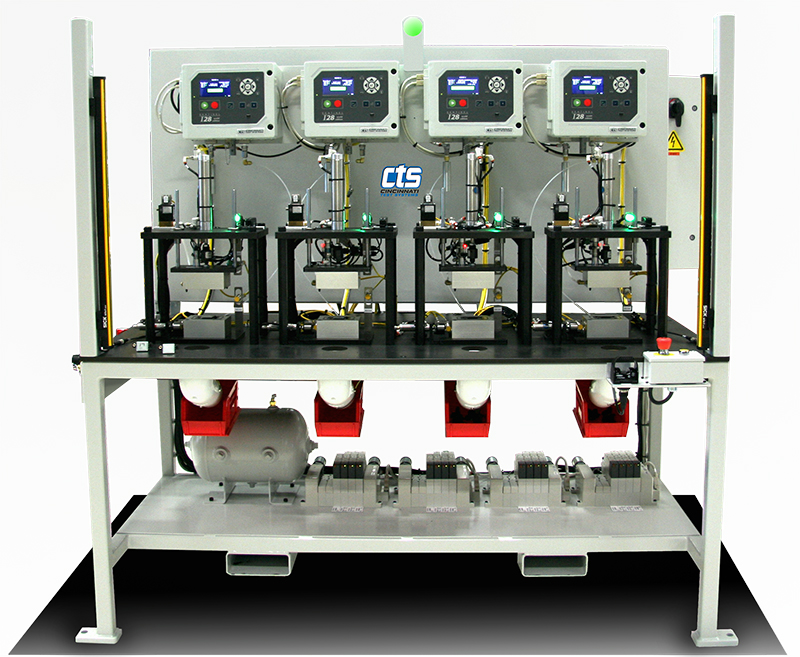SEALED SENSOR LEAK TEST SYSTEM
September 13, 2016
Market driver:
An electronic component manufacturer needs to leak test a sealed sensor for its resistance to ingress; dust, dirt, condensation, and liquids. They want to know how well, and how long, the product will perform to manufacturing specification to determine performance and quality issues. They will do 100% inspection to IP67 standards for process control validation. The customer requested a semi-automatic system with manual load/unload. Parts passing the leak test must be physically identified. The system must keep track of rejected parts for accountability.
CTS test solution:
CTS designed a volumetric fill pressure decay system that uses air pressure to simulate the physical environmental conditions to which the product will be exposed. The system provides four independent stations that utilize CTS Sentinel I28 instruments. To meet production requirements, CTS estimated the test cycle time and sized the system. It was determined four-stations with semi-automatic and operated by one operator was required to meet production. To maximize throughput the system will use asynchronous non-dependent part testing. Should a station be taken off-line, the other stations will continue to test parts.
The system will test four identical parts, one at each station. Each station consists of upper and lower chambers with custom fit fixturing to seat the part during the test. The upper chamber is pneumatically lowered to secure the part and seal onto the lower chamber for the leak test. During the volumetric fill cycle the instrument verifies that there is not a gross leak in the part, parts that pass advance to a fine leak test and those that pass this test are identified with a ‘green’ Accept light on the I28 instrument. At the conclusion of the leak test the upper chamber automatically retracts allowing the operator to unload the part. A ‘red’ Reject light identifies parts that fail the leak test. If a part fails its test the operator must press the ‘Reset’ button to retract the upper chamber, unload the rejected part, place the rejected part down a reject chute, and reset the system to continue testing. The system is equipped with a light curtain for operator safety and the cycle is initiated with a single a thumb pad start switch.
Attachments:
|

